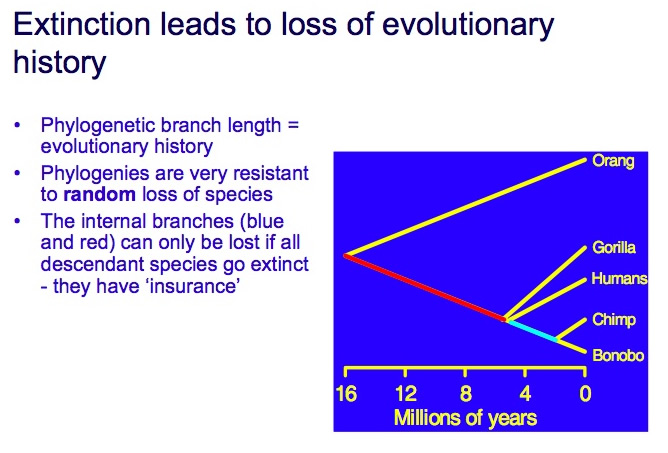
A. Definitions
1. Using evolutionary historical information to make management decisions
2. The prioritization of conservation policies to preserve evolutionar process to enhance future viability of populations.
a. Example: corridors allow gene flow among populations
b. Example: designing reserves so that populations can adapt to global climate change.
3. Dispersal and adaptation are critical evolutionary forces that need to be maintained to preserve the opportunity for evolutionary process.
Georgiana Mace, Talk presented at the International Summit on Evolution in Human-altered environments.
Excerpts from her talk. For her entire talk, see: Evolutionary biology and practical conservation: bridging a widening gap
1. Evolutionary significant units (ESU's)
a. Population that has a high priority for separate conservation
b. Populations with reproductive and historical isolation and adaptive differences form other populations within the species.
c. Controversial approach, but illustrate the issue of incorporating evolutionary history.

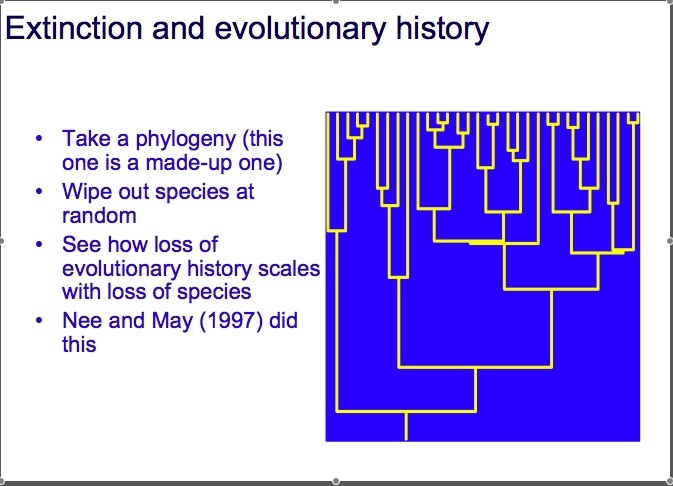
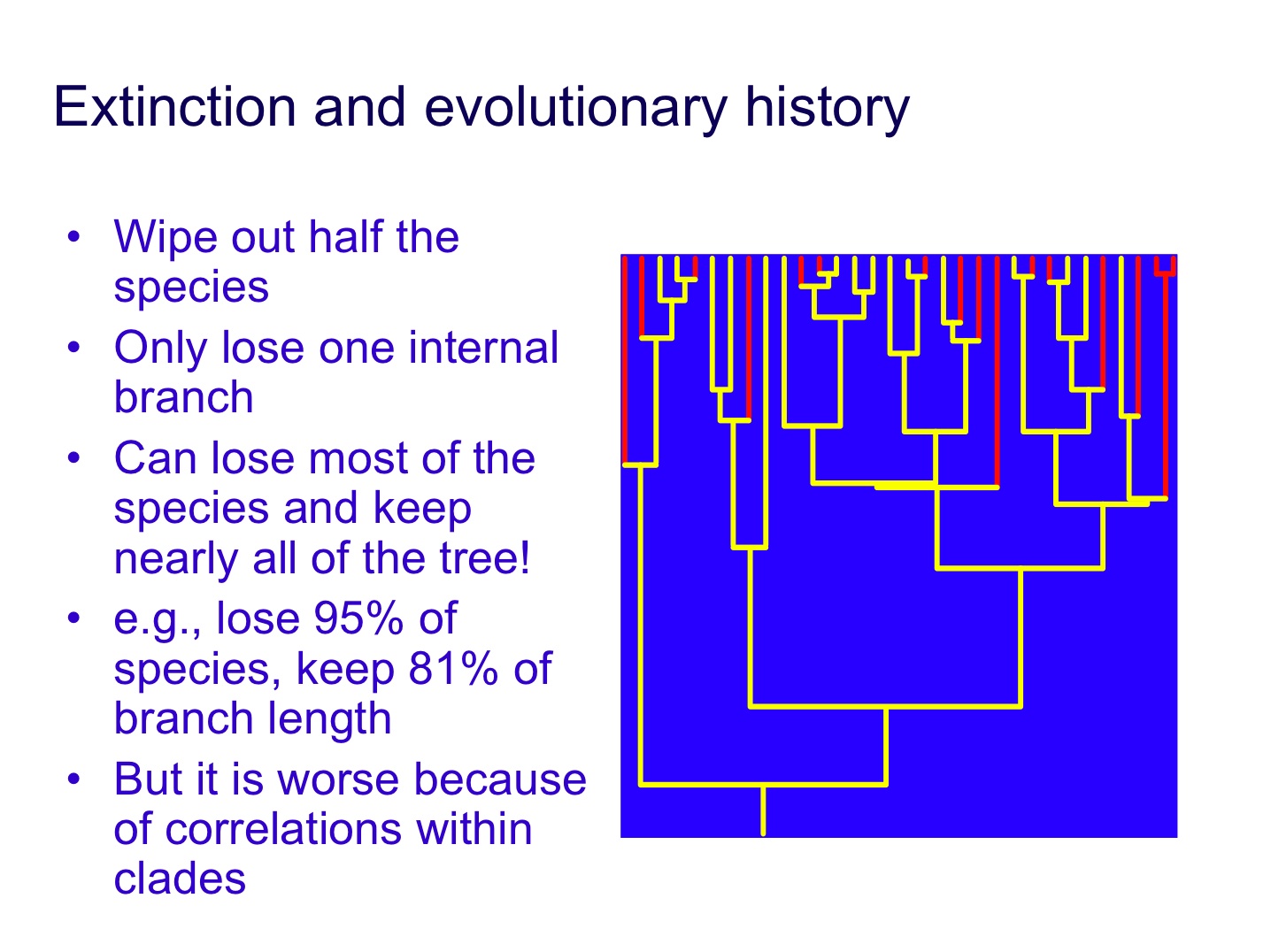
Example by Mace: Biological vs Phylogenetic Species concept:
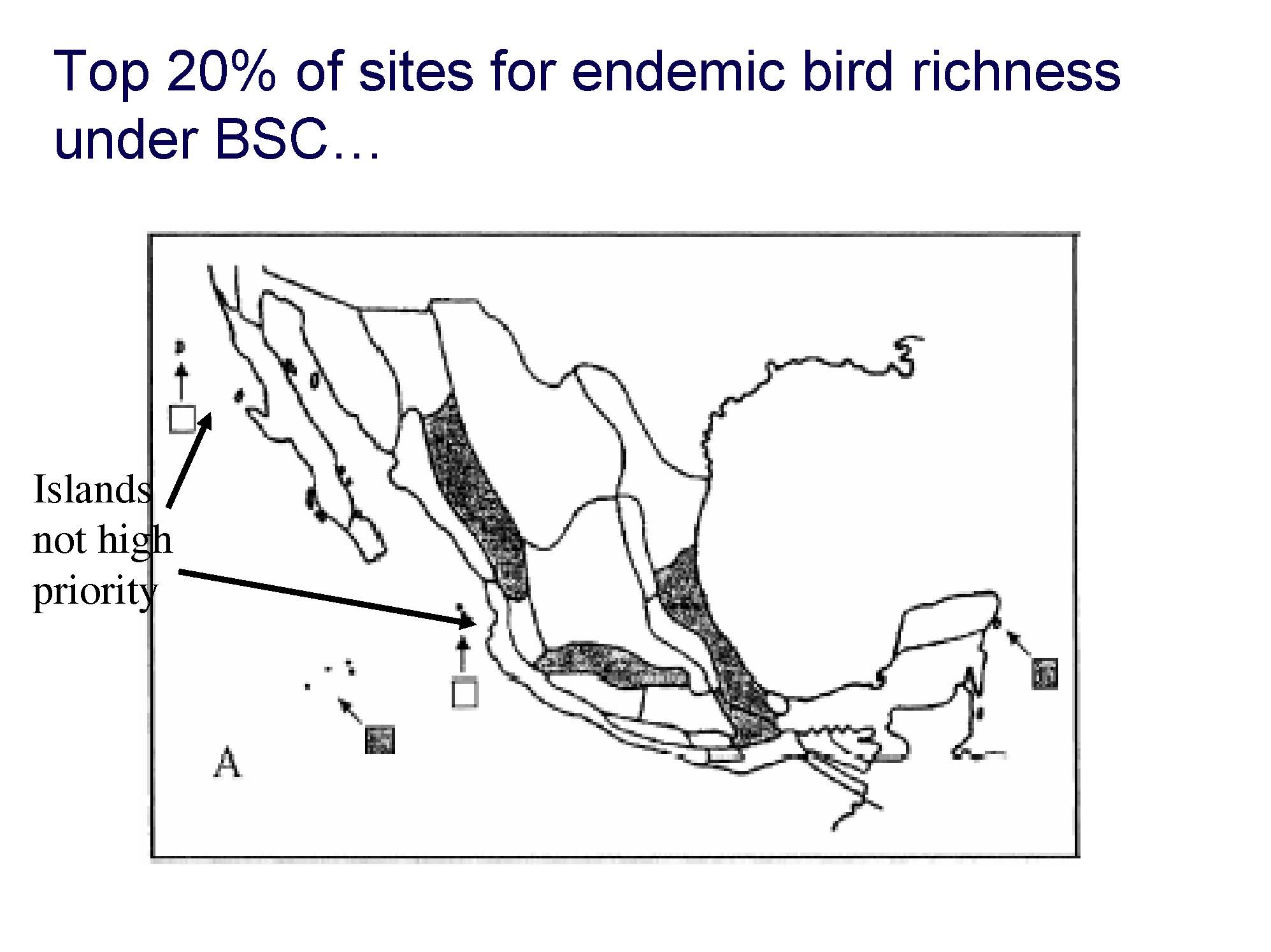
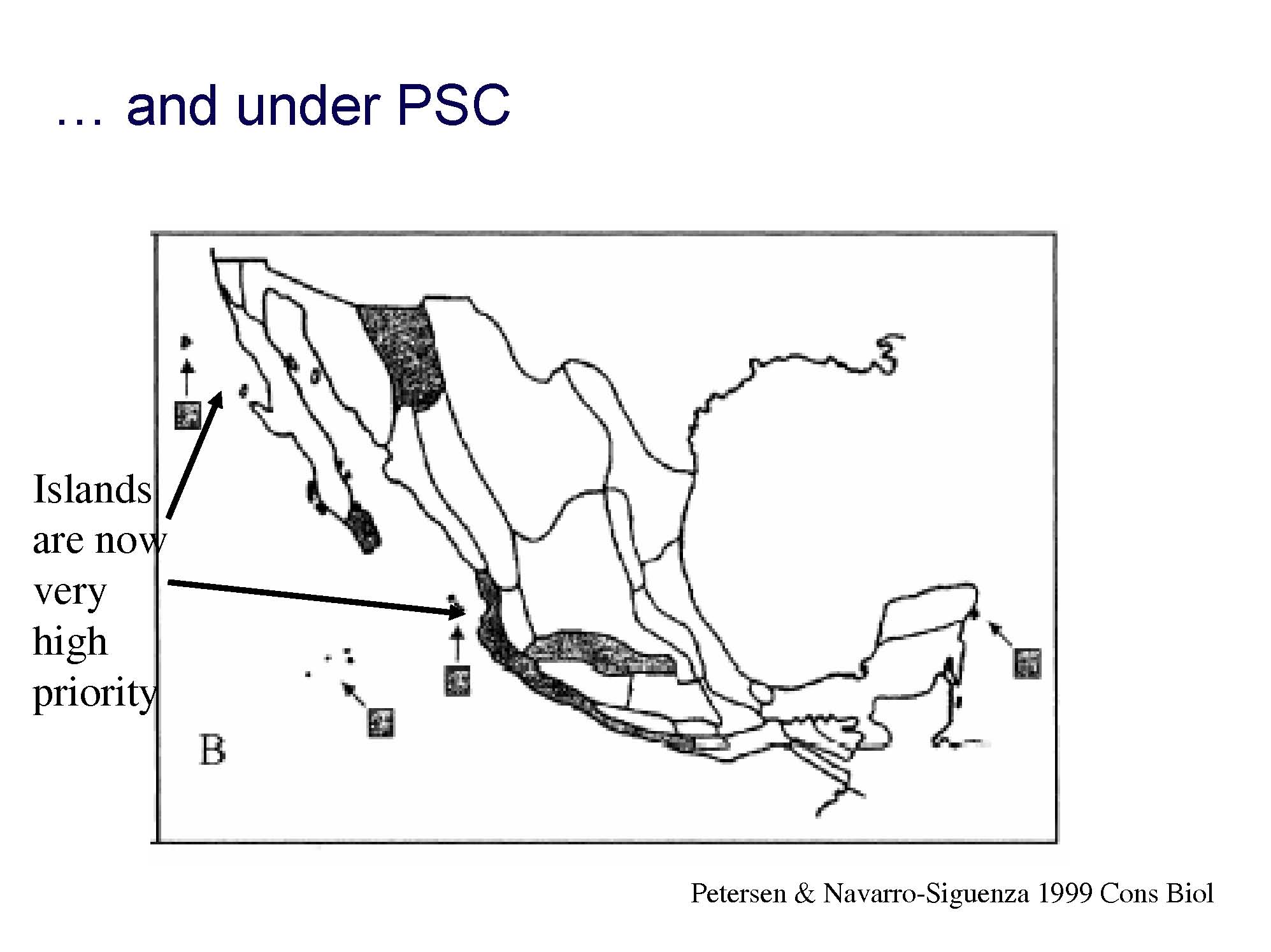
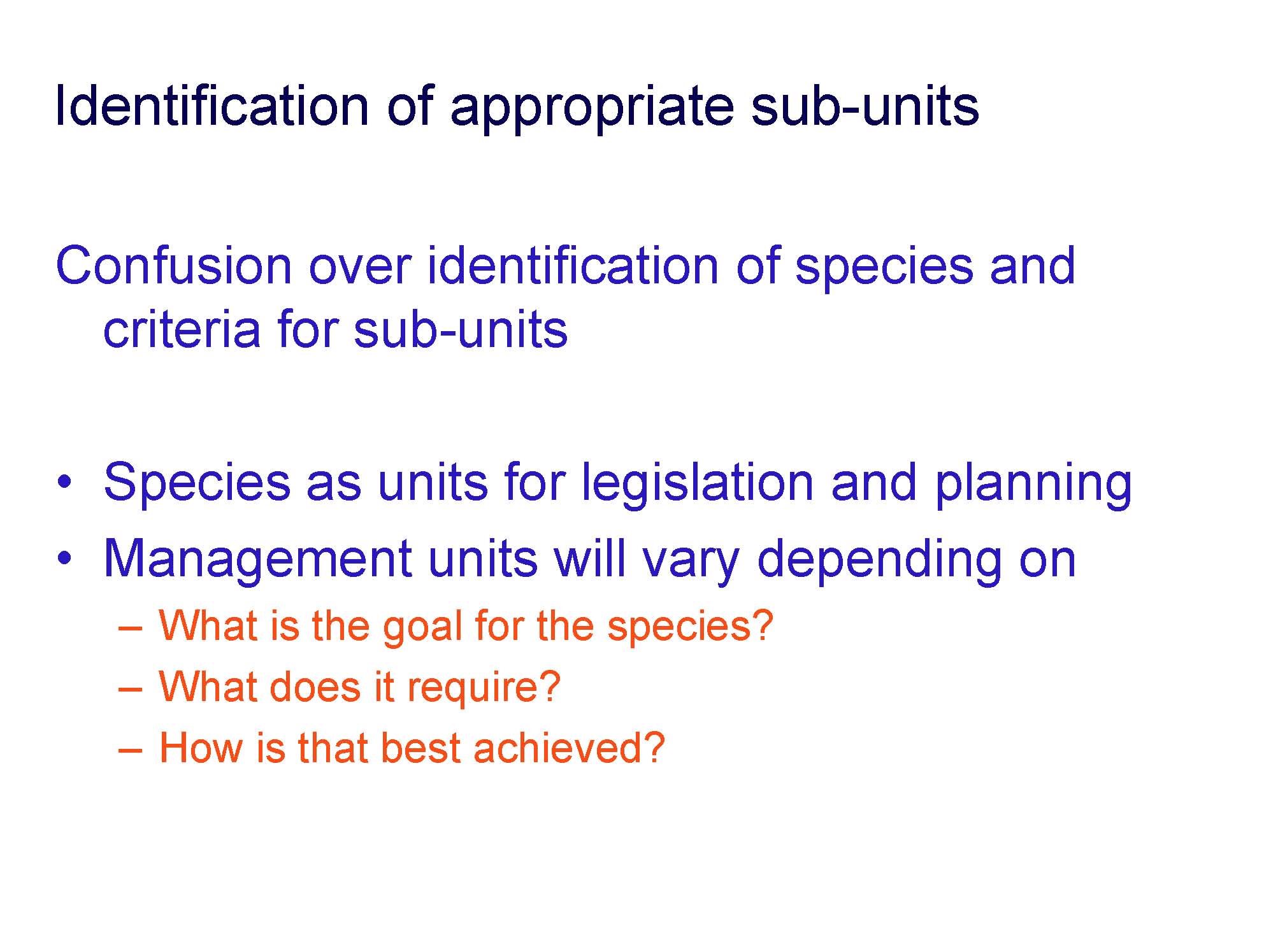
Example from talk from Craig Moritz at the the International Summit on Evolution in Human-altered environments.
For complete talk, see Predicting and protecting evolutionary hotspots in California
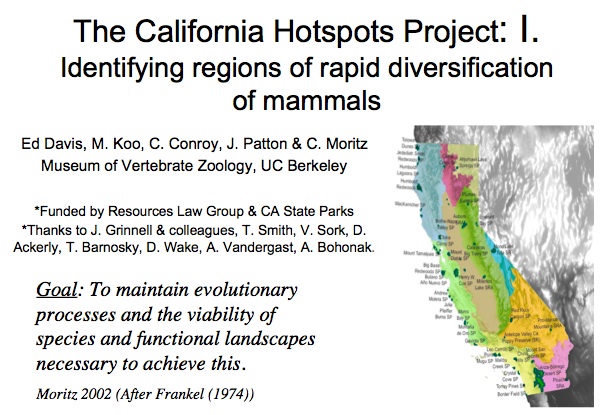
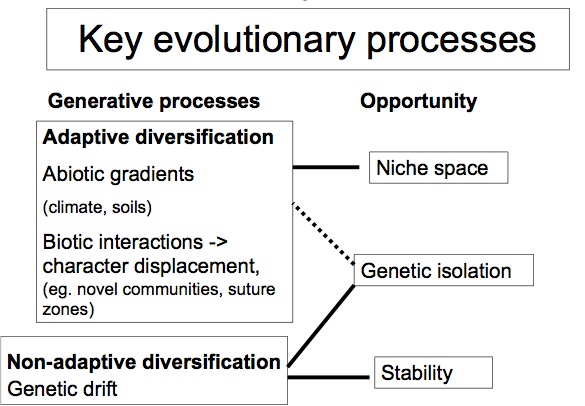
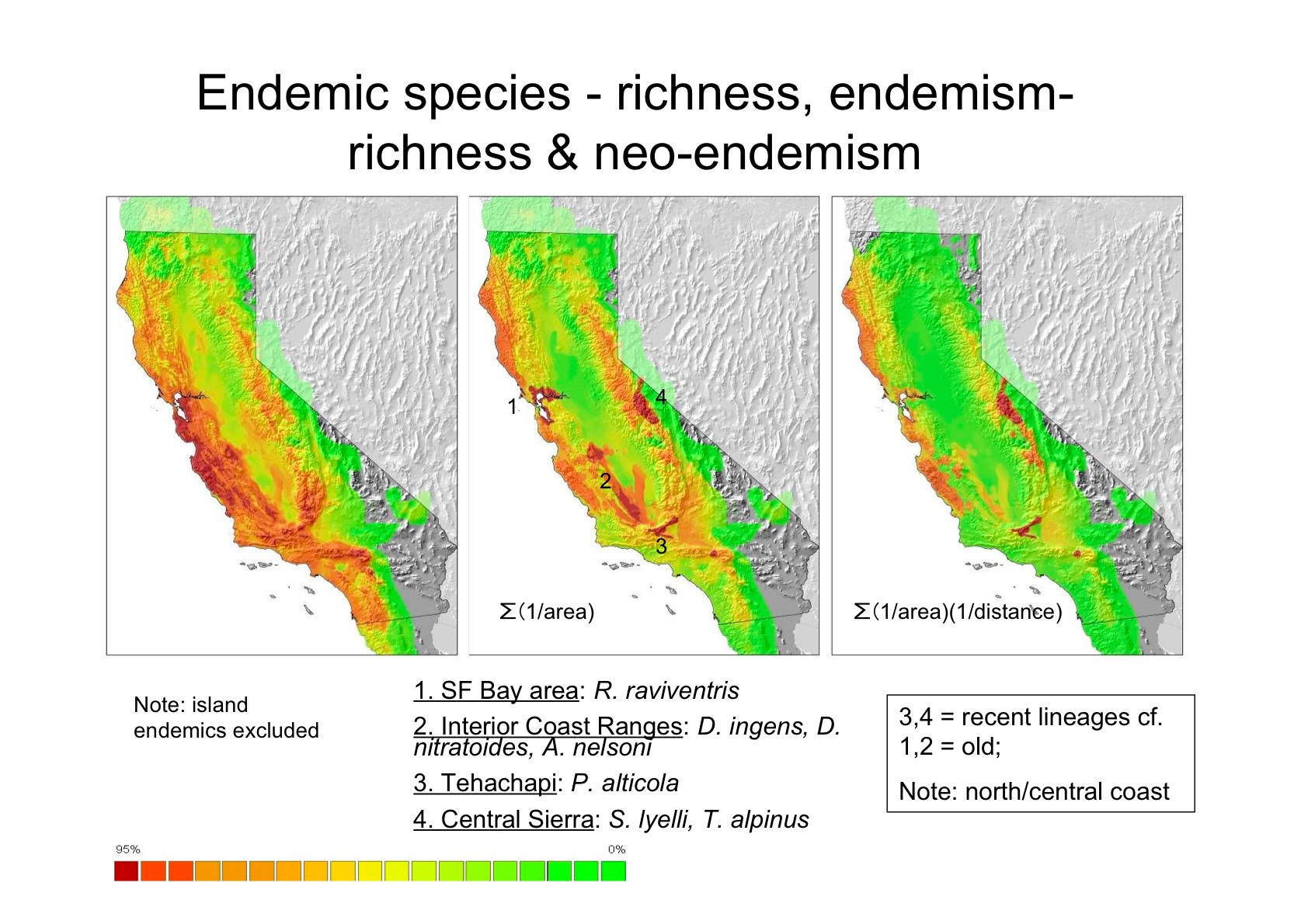
Example from talk by Victoria Sork at the the International Summit on Evolution in Human-altered environments.
For complete talk, see Do landscape changes threaten regions of evolutionary interest in California valley oak (Quercus lobata)?
1. Methods:
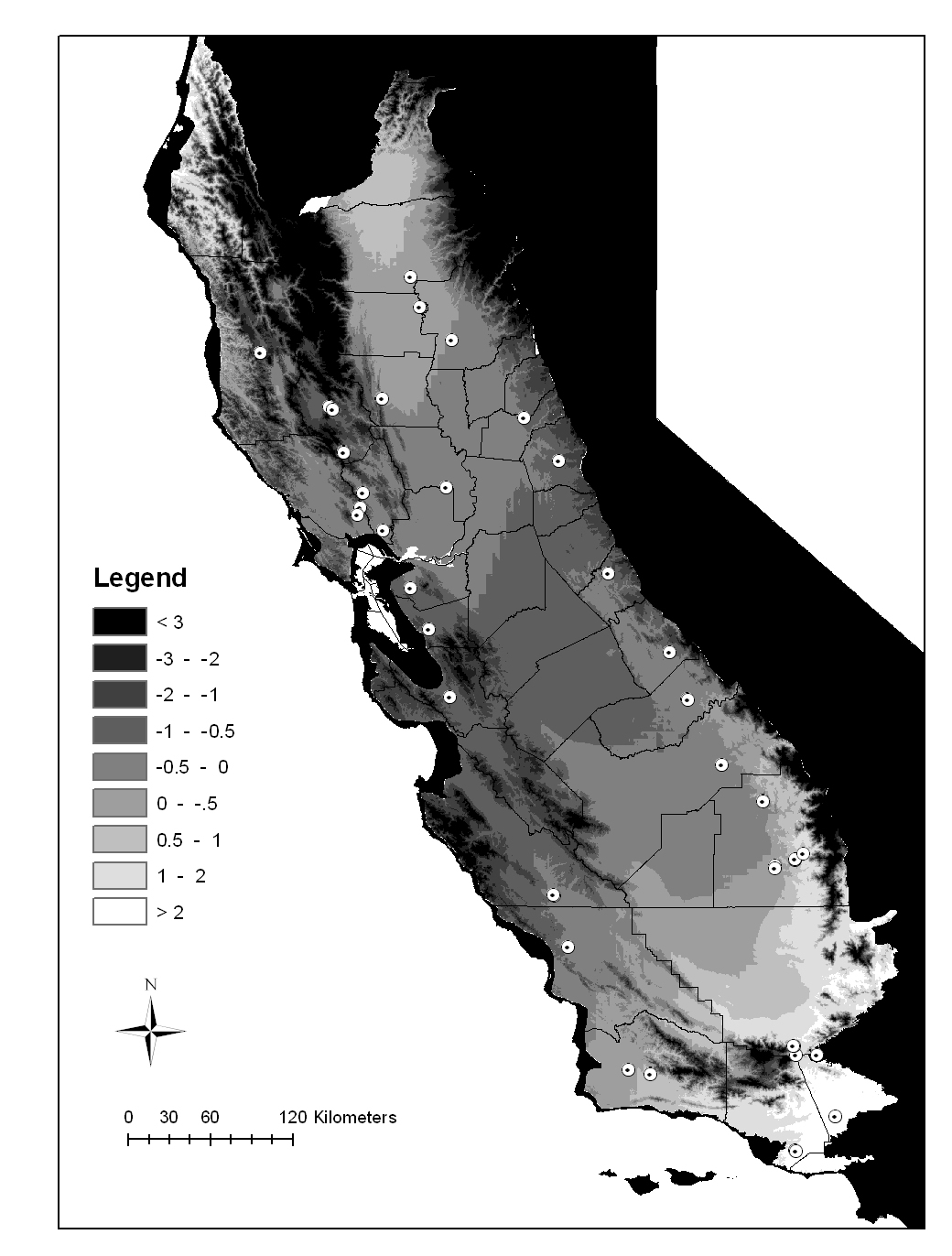
2. Result:
3. Similar areas of high genetic gradients as seen by mammals in Moritz' study
Conclusions: Reserve designs should include areas of high genetic gradients
Excepts from a talk by Loren Rieseberg at International Summit on Evolution in Human-altered environments.
For complete talk, see the Speed of Adaptation
In lecture, we will go through this selection of slides from at talk: Rieseberg excepts
NOTE: PRINT THIS PDF FOR LECTURE!